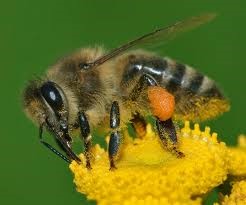We Are Inadvertently Damaging Honey bees in The U.S.
By: Paul Driessen
The honeybees, bumblebees and other little pollinators swarming over my flowers remind me what important roles they play – and how some misguided folks could inadvertently hurt them.
Montgomery County, Maryland, now prohibits “weed-and-feed” lawn fertilizer and most “synthetic pesticides.” But it allows homeowners, farmers and orchardists to use “organic” products that are often more dangerous to bees, other wildlife and even humans. New York is considering a five-year statewide ban on neonicotinoid insecticides; this action too would likely result in the use of chemicals that may actually be much more toxic to the birds and bees it seeks to protect.
US Rep. Nydia Velázquez (D-NY) is still promoting a bill to reinstate an Obama era ban on using neonics in the nation’s wildlife refuges. She mistakenly believes these pesticides threaten biodiversity, bees and other wildlife in these important habitats – whereas alternatives would be safe and harmless.
Other jurisdictions are pondering comparable actions that could pose similar problems.
Neonicotinoids were introduced in the 1990s to replace less targeted, more toxic pest control chemicals. Primarily used to coat seeds, “neonics” significantly reduce the need for aerial and ground-level spraying with other chemicals that actually do harm bees and other pollinators. They become part of the plant tissue and target only pests that actually feed on the crops, particularly during early growth stages.
This advance has helped boost crop yields while protecting the environment. Losing neonics would put many states’ farming economies at risk. Support for neonic use comes from all over the world.
Up in Canada, the same misinformation that’s motivating US legislative and regulatory actions persuaded Ontario lawmakers to pass a neonic ban in 2015. Farmers have since reported paying four times more for an alternative pesticide that is less effective, cannot be used on some crops and can harm bees.
Activists persuaded Europe to ban neonics in 2013. But subsequent studies found the ban disastrously counterproductive.
For instance, after the ban, British farmers had to spray four times more often than before, using older pesticides like pyrethroids and organophosphates that are less effective, must be sprayed several times during the growing season, and often harm bees, other non-target insects and even birds. Insect pests increased dramatically, and across Europe the canola (oilseed rape) industry suffered revenue losses of over $430 million in just a few years.
As was the case in Europe, proposed prohibitions are often the result of environmentalist pressure campaigns and false claims that bees are threatened by neonics. Actual data show the opposite is true.
Despite warnings of a “bee-pocalypse,” except during the latest “colony collapse disorder” (CCD), honeybee colonies have been rising worldwide since the 1990s, when neonics first came on the market. US Department of Agriculture (USDA) surveys show that U.S. honeybee hive numbers have increased seven out of the last ten years, and there are now over 150,000 more beehives than in 1995.
A closer look at New York’s crop yields also confirms that honeybee colonies are healthy. Apple yields are almost exactly the same as they were ten years ago, indicating that pollinators are thriving and busy doing their job. Similar lessons apply elsewhere.
There’s no doubt that honeybees have recurring problems. Overwinter losses are still high some years and, while bees reproduce rapidly and beekeepers can quickly replenish their hives, these losses can significantly strain this small but important industry.
To read the entire article go to;
________________________________________________________________________________








